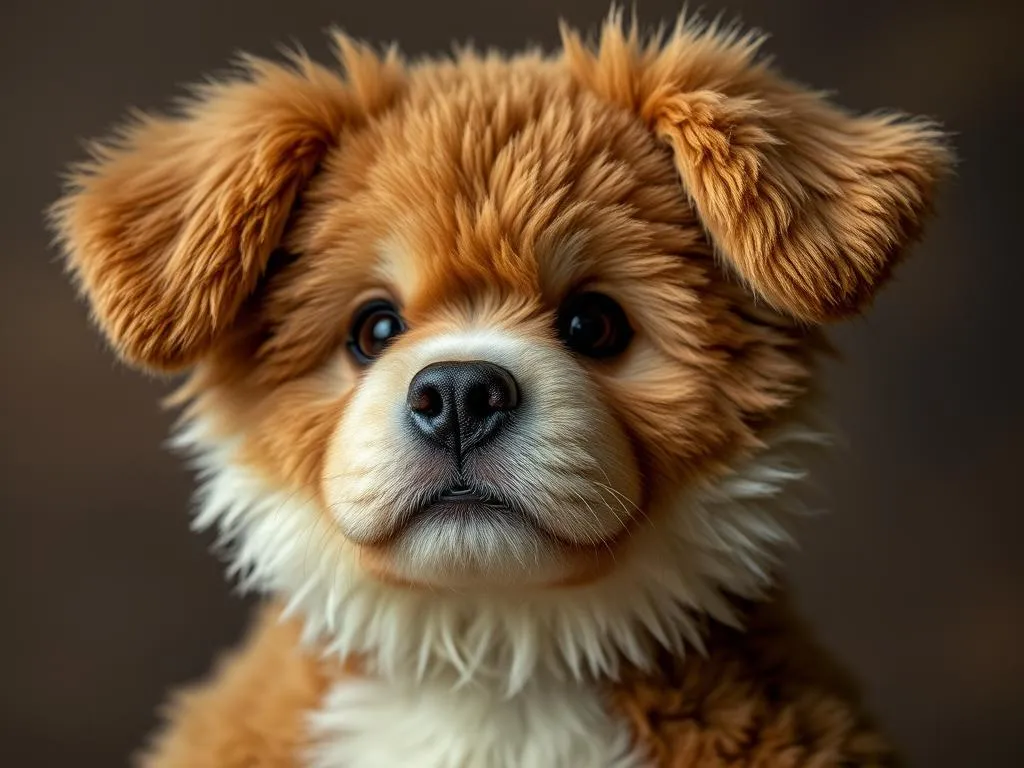
Introduction
Teddy bear dog breeds are a delightful group of canines known for their adorable, fluffy appearances and friendly dispositions. The term “teddy bear dog” often refers to small to medium-sized breeds that possess a round face, soft fur, and a playful temperament, making them resemble a beloved childhood toy.
These breeds have become increasingly popular among dog lovers, and it’s easy to see why. Their cute looks, combined with affectionate personalities, make them excellent companions for individuals and families alike. In this article, we will explore the characteristics, popular breeds, care requirements, and more, giving you a comprehensive understanding of these charming dogs.
Characteristics of Teddy Bear Dog Breeds
Physical Traits
Teddy bear dog breeds typically share certain physical characteristics that set them apart. They are often small to medium in size, making them ideal for apartment living. Here are some common traits:
- Size: Most teddy bear breeds range from 10 to 25 pounds, making them easy to handle and transport.
- Coat Type: Their coats are usually soft and fluffy, often requiring regular grooming to maintain their appearance.
- Color Variations: These dogs come in various colors, including cream, brown, black, and mixed shades, adding to their visual appeal.
Temperament
The personality traits of teddy bear dog breeds are as endearing as their looks. Generally, these dogs are:
- Friendly: They tend to be social and enjoy the company of people and other pets.
- Affectionate: Known for their loving nature, they thrive on human interaction and companionship.
- Playful: Their playful demeanor makes them great pets for families with children, as they love to engage in games and activities.
Health Considerations
While teddy bear dog breeds are generally healthy, they can be prone to certain health issues, including:
- Dental Problems: Small breeds often face dental health challenges.
- Eye Issues: Some breeds may be susceptible to cataracts or other eye conditions.
- Joint Problems: Dislocations and arthritis can be common in smaller dogs.
Regular veterinary check-ups can help monitor these conditions and maintain your dog’s health.
Popular Teddy Bear Dog Breeds
Shih Tzu
The Shih Tzu is a classic teddy bear breed known for its friendly demeanor and adorable face. Originating from China, these dogs were bred as companion animals for royalty.
- Size: Typically weighs between 9 to 16 pounds.
- Unique Traits: Shih Tzus have a long, flowing coat that requires frequent grooming. Their playful attitude and loyalty toward family members make them excellent companions.
- Care Tips: Regular brushing and occasional trips to a professional groomer will keep their coat looking its best.
Bichon Frise
The Bichon Frise is another beloved teddy bear breed. With its cheerful personality and fluffy coat, this breed is a favorite among families.
- Size: Weighs about 12 to 18 pounds.
- Unique Traits: Known for their hypoallergenic coat, Bichons are perfect for allergy sufferers. They are playful and thrive on social interaction.
- Care Tips: Regular grooming is essential to prevent matting and maintain their fluffy appearance.
Maltese
The Maltese is a small breed with a long, silky coat and a charming personality. These dogs have been adored for centuries, originating from the Mediterranean region.
- Size: Weighs around 4 to 7 pounds.
- Unique Traits: Maltese dogs are known for their affectionate nature and playful spirit. They bond closely with their owners and love to be pampered.
- Care Tips: Daily brushing is recommended to keep their coat tangle-free and healthy.
Pomeranian
The Pomeranian is a small breed with a distinctive fluffy double coat and a lively personality. They are known for their extroverted nature and intelligence.
- Size: Typically weighs between 3 to 7 pounds.
- Unique Traits: Their playful attitude and loyalty make them great family pets. They have a lively personality and enjoy engaging in activities.
- Care Tips: Regular grooming is necessary to manage shedding and maintain their coat.
Havanese
The Havanese is another teddy bear breed characterized by its friendly nature and affectionate demeanor. Originating from Cuba, this breed is known for its charm and intelligence.
- Size: Weighs around 7 to 13 pounds.
- Unique Traits: Havanese dogs are highly social and thrive in family environments. They are known for their playful and adaptable nature.
- Care Tips: Regular grooming and exercise are essential to keep them happy and healthy.
Cavapoo (Cavalier King Charles Spaniel and Poodle Mix)
The Cavapoo is a delightful mix of the Cavalier King Charles Spaniel and the Poodle, combining the best traits of both breeds.
- Size: Typically weighs between 10 to 20 pounds.
- Unique Traits: Cavapoos are friendly, intelligent, and eager to please. They make excellent family pets due to their loving nature.
- Care Tips: Regular grooming is necessary to maintain their coat, and they benefit from daily exercise.
Goldendoodle (Golden Retriever and Poodle Mix)
The Goldendoodle is a popular hybrid breed that combines the friendly nature of the Golden Retriever with the intelligence of the Poodle.
- Size: Weighs between 20 to 65 pounds, depending on the Poodle’s size used in breeding.
- Unique Traits: Goldendoodles are known for their friendly disposition and low-shedding coats, making them a favorite among families.
- Care Tips: Regular grooming and exercise are necessary to keep them healthy and happy.
Pros and Cons of Owning Teddy Bear Dog Breeds
Advantages
Owning a teddy bear dog breed comes with numerous benefits:
- Companionship and Loyalty: These breeds are known for their strong bond with their owners, providing companionship and emotional support.
- Low-to-Moderate Exercise Needs: Most teddy bear breeds do not require extensive exercise, making them suitable for apartment living.
- Good for Families and Apartments: Their small size and friendly nature make them ideal companions for families with children or individuals living in smaller spaces.
Disadvantages
However, there are also some considerations to keep in mind:
- Grooming Requirements: Many teddy bear breeds require regular grooming to maintain their coats, which can be time-consuming and costly.
- Potential Health Issues: As mentioned, some breeds may be prone to specific health problems, requiring attentive care and veterinary visits.
- Training Challenges: Some teddy bear breeds can be stubborn or have difficulty with training, necessitating patience and consistency from their owners.
Care and Maintenance
Grooming Needs
Proper grooming is essential for the well-being of teddy bear dog breeds:
- Coat Care: Regular brushing helps prevent matting and keeps their coats healthy.
- Brushing Frequency: Most breeds benefit from brushing several times a week.
- Grooming Tools: Invest in a good quality brush and grooming supplies to maintain their appearance.
Diet and Nutrition
A balanced diet is crucial for teddy bear breeds:
- Recommended Diet: Look for high-quality dog food that meets their specific nutritional needs.
- Portion Control: Pay attention to portion sizes to prevent obesity, a common issue in small breeds.
- Feeding Schedule: Regular feeding times help maintain a healthy routine.
Exercise Requirements
While teddy bear breeds have lower exercise needs, they still require daily activity:
- Daily Exercise: Short walks and play sessions are typically sufficient to keep them happy.
- Suitable Activities: Engage them with toys or games that stimulate their minds and bodies.
Health Check-ups
Regular veterinary visits are essential:
- Importance of Regular Vet Visits: Routine check-ups help catch potential health issues early.
- Vaccination and Preventive Care: Stay up-to-date on vaccinations and preventive treatments to ensure their health.
Training and Socialization
Basic Training Tips
Training your teddy bear dog is vital for good behavior:
- Commands and Tricks: Start with basic commands like sit, stay, and come. Use positive reinforcement techniques for effective training.
- Consistency is Key: Be consistent in your training approach to help your dog understand expectations.
Socialization Importance
Socializing your teddy bear dog is crucial for their development:
- Benefits of Early Socialization: Early exposure to various people, animals, and environments helps them become well-adjusted adults.
- How to Properly Socialize a Teddy Bear Dog: Introduce them to new experiences gradually, ensuring that each encounter is positive.
Finding a Teddy Bear Dog
Adoption vs. Buying
When considering a teddy bear dog, you have options:
- Pros and Cons of Each Option: Adoption can save a life, while buying from a breeder may ensure specific breed traits.
- Considerations: Think about your lifestyle, preferences, and the commitment involved in either option.
Choosing a Reputable Breeder
If you choose to buy, it’s important to find a responsible breeder:
- What to Look for in a Responsible Breeder: Research breeders who prioritize health testing and socialization.
- Questions to Ask: Inquire about the puppy’s health history, socialization practices, and breeding conditions.
Adoption Resources
Consider adopting from shelters or rescue organizations:
- Shelters and Rescue Organizations: Many organizations specialize in finding homes for teddy bear breeds.
- How to Find Local Resources: Look for local shelters or breed-specific rescues in your area.
Conclusion
In summary, teddy bear dog breeds are charming companions that can bring joy and love into any home. Their affectionate nature, playful demeanor, and adorable looks make them a popular choice among dog lovers. However, it’s essential to consider their grooming needs, potential health issues, and training challenges before bringing one into your life.
If you decide to welcome a teddy bear dog into your home, you will find a loyal and loving friend by your side. Remember that responsible dog ownership comes with commitments, but the rewards of companionship and joy make it all worthwhile.









